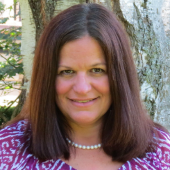The Department of Ecology (Ecology) recently took a first step in implementing the state’s PFAS ban in food packaging by issuing an alternatives assessment that identifies safer alternatives for some important applications, including wraps and liners, plates, food boats, and pizza boxes. Because of this assessment, a statewide ban on PFAS in these four food packaging categories will now go into effect in early 2023.
Unfortunately, Ecology’s assessment misses the mark for key food packaging applications.
Ecology also assessed alternatives to PFAS for six other types of packaging: bags and sleeves, bowls, trays, french fry cartons, clamshells, and interlocking folded containers (i.e. takeout boxes). For these categories, it failed to make a finding—that safer alternatives are available—that would trigger the ban.
Although the agency identified less hazardous alternatives for all types of packaging it assessed, it failed to draw common-sense conclusions that would allow for a finding of availability of safer alternatives, citing reasons that include a lack of data on cost and performance.
The conclusions in Ecology’s assessment for these six categories are problematic given the dangers posed by PFAS in food packaging and the fact that the agency found less hazardous alternatives for all ten product categories. Since the law requires that the agency continue to look for safer alternatives, Ecology is planning a second round starting now.
We urge Ecology to immediately re-assess the availability of alternatives, address the flaws in its assessment methodology, revise its assessments, and fully enact the ban. The current plan—launching a new assessment that will likely take a year or more—is too slow and may result in more PFAS contaminating drinking water and soils.
The market is already phasing out PFAS. Major companies from McDonald’s to Whole Foods Market are phasing out PFAS chemicals. PFAS manufacturers, including Daikin, agreed to end the manufacture of some PFAS chemicals for food packaging by 2024. New York has adopted a ban on all PFAS in paper food packaging set to take effect in December 2022.
The agency chose to ignore important information that would have allowed the full ban to take effect. Meanwhile, the use of PFAS in food packaging is unnecessarily causing exposure to chemicals with a wide range of effects from immune system harm to reproductive problems and cancer. The issue is urgent and requires immediate action.
Since the adoption of the law in 2018, Toxic-Free Future identified safer alternatives for all of the applications and continued to provide extensive information. Many alternatives that we identified were wrongfully discounted by the agency due to claims of insufficient data on cost or availability, even though they are already in widespread use.
Key problems with the Washington study
Four major flaws in the study include:
- A failure to make a finding that the bioplastic polylactic acid (PLA) products meet the criteria for cost and availability. Even though the agency identified PLA as a less hazardous alternative that could be used for numerous applications, it eliminated PLA from the running as a safer alternative for these applications at least partly because of a concern, based on limited data, that PLA shortages could occur. At the same time, the agency noted major companies are bringing significant new capacity on line. In addition, the agency found that the costs of some PLA products can be higher, but we believe increased supply will also help achieve economies of scale to drive down costs for users. These findings should be reversed so that PLA products are identified as safer alternatives.
- The agency created unnecessary hurdles to conclude alternatives were readily available and in sufficient supply. According to the law, “in order to determine that safer alternatives are available, the safer alternatives must be readily available in sufficient quantity and at a comparable cost, and perform as well as or better than PFAS chemicals in a specific food packaging application.” It does not require each alternative to be in sufficient quantity. However, the agency makes a finding of insufficient availability when a single alternative cannot meet all supply needs.
- Stringently defining comparable cost, which inevitably resulted in data gaps. The agency decided any additional cost for alternatives should not exceed more than 10%, but information on specific costs is largely unavailable. The assessment states, “Manufacturers often consider pricing information confidential, and many hesitated to provide it for specific products.”
Considering the enormous costs to human health and the environment when it comes to cleaning up PFAS contamination, the agency should not use a specific percentage when determining whether costs are comparable. A common-sense approach would be to simply evaluate whether the alternatives are used in the marketplace, because that shows the alternatives are available and cost effective. While the assessment cites numerous examples of companies switching to PFAS-free alternatives, including Sweetgreen, Chipotle, Taco Bell, Whole Foods Market, Trader Joe’s, Kroger, Panera Bread, and Taco Time, it then discounts the information. Clearly, if these major retailers can transition to alternatives, cost-effective alternatives must be available.
In addition, a ban on PFAS would result in increased demand for alternatives, which would lower the cost. Future costs based on economies of scale were insufficiently considered. - The agency should broaden its consideration of acceptable substitutes. The authorizing legislation (RCW 70A.222.070) states that Ecology must publish its findings “on whether safer alternatives to PFAS chemicals in specific applications of food packaging are available for each assessed application.” A substitute for a given type of food packaging may take the same form, or it may take a different form but serve the same function. In fact, users of food packaging commonly make this type of substitution. For example, when Whole Foods Market discovered its clamshells contained PFAS, it switched to a PFAS-free interlocking folded container. Ecology should not constrain its consideration in a way that the market does not.
These key failures—excluding PLA, having unreasonable assessments of cost and availability, and narrow consideration of substitutes—resulted in conclusions that certain products do not meet the criteria for the ban to take effect. Given the widespread use of alternatives, these conclusions are surprising and unfortunate.
Washington state has been leading the nation in preventing PFAS pollution from products. There is an opportunity to protect public health, drinking water, and our food from PFAS by fixing this assessment now and enacting the ban. We urge Ecology to seize this opportunity.





